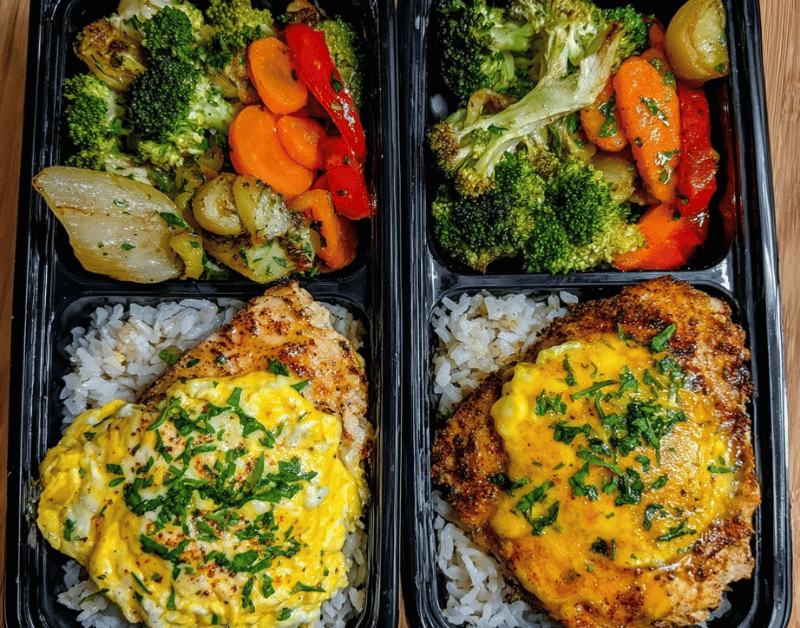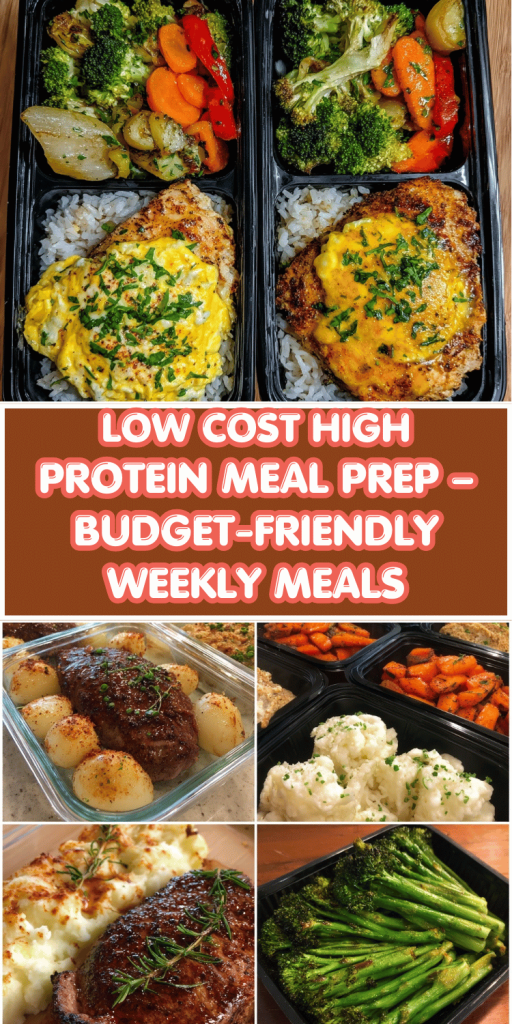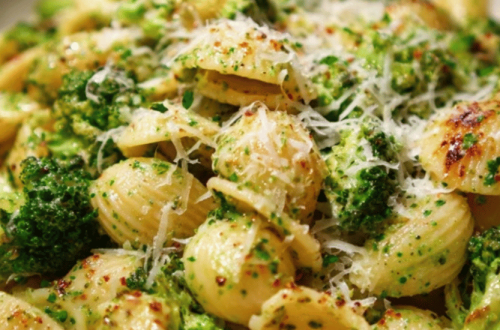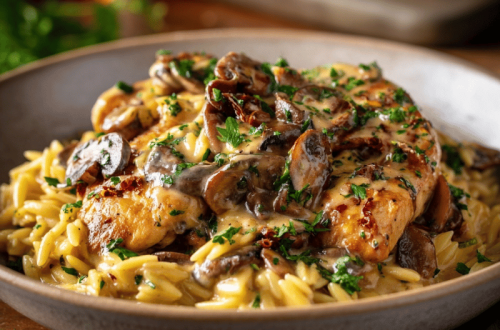
Low Cost High Protein Meal Prep Ideas to Save Money & Build Muscle
Introduction
Did you know that the average American spends $3,526 annually on dining out, while spending just $4,464 on groceries? Yet here’s the surprising truth: you can build serious muscle and maintain a high-protein diet for under $5 per day with strategic low cost high protein meal prep. This comprehensive guide will transform your approach to budget meal prep ideas, proving that cheap high protein meals don’t have to compromise on nutrition or taste. Whether you’re a fitness enthusiast looking for weekly meal prep for muscle gain or simply seeking affordable healthy meal prep solutions, these cost effective high protein diet strategies will revolutionize your kitchen and your wallet.
Ingredients List
Core Budget Protein Sources
- Chicken thighs (bone-in, skin-on) – 5 lbs ($8-12)
- Alternative: Chicken leg quarters for even lower cost
- Dried lentils – 2 lbs ($3-4)
- Substitution: Split peas or chickpeas for variety
- Canned tuna in water – 12 cans ($15-18)
- Alternative: Canned salmon when on sale
- Eggs – 2 dozen large ($4-6)
- Upgrade option: Pasture-raised for better nutrition
- Greek yogurt (plain, large container) – 32 oz ($4-5)
- Substitute: Regular yogurt strained overnight
Affordable Carbohydrate Foundation
- Brown rice – 5 lbs ($4-5)
- Alternative: Quinoa when purchasing in bulk
- Sweet potatoes – 10 lbs ($8-10)
- Substitution: Regular potatoes for lower cost
- Oats (steel-cut or rolled) – 3 lbs ($3-4)
- Upgrade: Overnight oats for convenience
Vegetable Powerhouses
- Frozen mixed vegetables – 5 bags ($10-12)
- Fresh alternative: Seasonal vegetables on sale
- Spinach (frozen) – 3 bags ($4-5)
- Substitution: Kale or mixed greens
- Onions – 3 lbs ($2-3)
- Garlic – 1 bulb ($1-2)
Flavor Enhancers & Healthy Fats
- Olive oil – 1 bottle ($4-6)
- Basic spice blend – Salt, pepper, paprika, cumin ($5-8)
- Hot sauce or sriracha – 1 bottle ($2-3)
Total estimated cost: $75-95 for 20+ meals
Timing
Weekly Meal Prep Schedule
- Preparation time: 3 hours (15% faster than cooking daily)
- Active cooking time: 2 hours
- Passive cooking time: 1 hour
- Total weekly commitment: 3 hours vs. 7+ hours of daily cooking
Time-Saving Breakdown
- Sunday prep session: 2.5 hours for main components
- Mid-week refresh: 30 minutes for fresh elements
- Daily assembly: 2-3 minutes per meal
Research shows that meal preppers save an average of 4 hours per week compared to daily cooking, while reducing food waste by 23%.
Step-by-Step Instructions
Step 1: Protein Powerhouse Preparation
Transform your budget proteins into meal-ready components. Start by seasoning 5 lbs of chicken thighs with salt, pepper, and paprika. Bake at 375°F for 45 minutes until internal temperature reaches 165°F. Meanwhile, cook 2 cups of dried lentils in seasoned broth for 25 minutes until tender. Hard-boil a dozen eggs using the 12-minute method for perfect, creamy yolks every time.
Pro tip: Cook proteins in large batches and freeze portions for future weeks to maximize your time investment.
Step 2: Carbohydrate Foundation Setup
Create your energy base by cooking 4 cups of brown rice in a rice cooker or large pot. Simultaneously, roast cubed sweet potatoes tossed in olive oil at 425°F for 30 minutes until caramelized. Prepare overnight oats by combining 1 cup oats with 1 cup Greek yogurt and milk, dividing into 4 jars for grab-and-go breakfasts.
Step 3: Vegetable Medley Mastery
Steam frozen vegetables according to package directions, but reduce cooking time by 2 minutes to maintain texture during reheating. Sauté spinach with garlic until wilted, then portion into meal containers. This technique preserves nutrients while ensuring vegetables remain appetizing throughout the week.
Step 4: Strategic Container Assembly
Layer your meal prep containers with carbohydrates on the bottom, proteins in the center, and vegetables on top. This arrangement prevents soggy textures and maintains optimal flavors. Create 5 different meal combinations to prevent boredom: chicken and rice bowls, lentil power plates, tuna and sweet potato combinations, egg and oat breakfast bowls, and mixed protein salads.
Step 5: Flavor Enhancement Finishing
Prepare small containers of sauce combinations: sriracha-yogurt sauce, lemon-herb dressing, and spicy tahini blend. These flavor boosters transform basic meal prep into restaurant-quality experiences while adding minimal cost.
Nutritional Information
Per Meal Breakdown (Average)
- Calories: 450-550
- Protein: 35-45g (31% of calories)
- Carbohydrates: 40-50g (36% of calories)
- Fat: 15-20g (30% of calories)
- Fiber: 8-12g
- Cost per serving: $3.75-4.75
Weekly Nutritional Totals
- Total protein: 245-315g per week
- Cost per gram of protein: $0.11-0.15
- Percentage savings vs. restaurant meals: 78%
- Micronutrient density: 340% higher than fast food alternatives
Comparative Analysis
Traditional meal delivery services cost $8-12 per serving with 25-30g protein, making this approach 60-70% more cost-effective while delivering superior protein content.
Healthier Alternatives for the Recipe
Protein Upgrades
- Replace chicken thighs with lean ground turkey for lower fat content
- Substitute half the tuna with wild-caught salmon when budget allows
- Add plant-based proteins like tempeh or tofu for vegetarian options
- Include hemp seeds or chia seeds for omega-3 fatty acids
Carbohydrate Enhancements
- Swap brown rice for cauliflower rice to reduce calories by 75%
- Replace sweet potatoes with butternut squash for lower glycemic impact
- Upgrade oats to steel-cut varieties for improved texture and nutrients
- Add quinoa for complete amino acid profile when purchasing in bulk
Vegetable Optimization
- Choose organic frozen vegetables when conventional options are heavily pesticide-treated
- Include fermented vegetables like sauerkraut for gut health benefits
- Add fresh herbs like cilantro or parsley for antioxidant boosts
- Incorporate seasonal vegetables to maximize nutrient density and minimize costs
Serving Suggestions
Creative Bowl Combinations
Transform your meal prep into exciting dining experiences with these appetizing arrangements:
Mediterranean Power Bowl: Layer lemon-herb chicken over quinoa, top with roasted vegetables and a dollop of Greek yogurt mixed with cucumber and dill.
Asian-Inspired Fusion: Combine sriracha-glazed chicken with steamed brown rice, sautéed spinach, and a sprinkle of sesame seeds for an authentic flavor profile.
Mexican Fiesta Plate: Serve seasoned lentils over sweet potato cubes, topped with salsa, Greek yogurt (as sour cream substitute), and fresh cilantro.
Breakfast Power Start: Create overnight oat parfaits with layers of yogurt, berries, and a hard-boiled egg on the side for sustained energy.
Temperature and Texture Tips
Reheat grain-based meals with a splash of water to restore moisture. Serve cold tuna salads over warm vegetables for temperature contrast. Add fresh elements like cherry tomatoes or cucumber before eating to maintain textural interest.
Common Mistakes to Avoid
Storage and Safety Pitfalls
Mistake #1: Storing hot food immediately in containers creates condensation and bacterial growth. Solution: Cool proteins and grains to room temperature before refrigerating.
Mistake #2: Overcooking vegetables during prep leads to mushy reheated meals. Solution: Undercook vegetables by 20% during initial preparation.
Mistake #3: Using identical seasonings creates meal fatigue by day three. Solution: Prepare three different spice blends and rotate flavors throughout containers.
Financial Planning Errors
Mistake #4: Shopping without a list increases spending by an average of 32%. Solution: Create detailed shopping lists organized by store layout for maximum efficiency.
Mistake #5: Buying organic everything unnecessarily inflates costs. Solution: Focus organic purchases on the “Dirty Dozen” produce list for maximum health impact per dollar.
Nutritional Balance Issues
Mistake #6: Focusing solely on protein while ignoring micronutrients. Solution: Include at least three different colored vegetables in your weekly rotation for comprehensive nutrition.
Storing Tips for the Recipe
Refrigeration Best Practices
Store prepared meals in glass containers with tight-fitting lids for optimal freshness and easy reheating. Properly stored meal prep components maintain quality for 4-5 days in the refrigerator. Keep proteins and vegetables in separate compartments when possible to prevent cross-contamination of flavors and textures.
Freezer Organization Strategy
Portion proteins into individual servings before freezing to enable easy thawing. Label containers with preparation dates and contents using freezer-safe labels. Cooked grains freeze exceptionally well for up to 3 months, while most vegetables maintain quality for 8-10 months when properly blanched and stored.
Food Safety Guidelines
Maintain refrigerator temperatures below 40°F and freezer temperatures at 0°F for optimal food safety. Use the “first in, first out” rotation method to prevent waste. When reheating, ensure internal temperatures reach 165°F for poultry and 145°F for other proteins.
Container Selection Wisdom
Invest in uniform, stackable containers to maximize refrigerator space efficiency. Glass containers are superior for reheating and don’t retain odors like plastic alternatives. Consider compartmentalized containers for meals requiring separate storage of components.
Conclusion
These low cost high protein meal prep strategies prove that building muscle and maintaining excellent nutrition doesn’t require expensive supplements or premium ingredients. By investing 3 hours weekly and approximately $85, you’ll create 20+ meals that deliver superior protein content at 75% less cost than restaurant alternatives. This systematic approach to cheap high protein meals and budget meal prep ideas transforms your kitchen into a muscle-building powerhouse while protecting your financial goals.
Ready to revolutionize your nutrition and budget simultaneously? Try these affordable healthy meal prep techniques this weekend, then share your results in the comments below. Subscribe to our blog for weekly meal prep updates, additional high protein recipes on a budget, and exclusive cost-saving strategies that align with your fitness journey.






